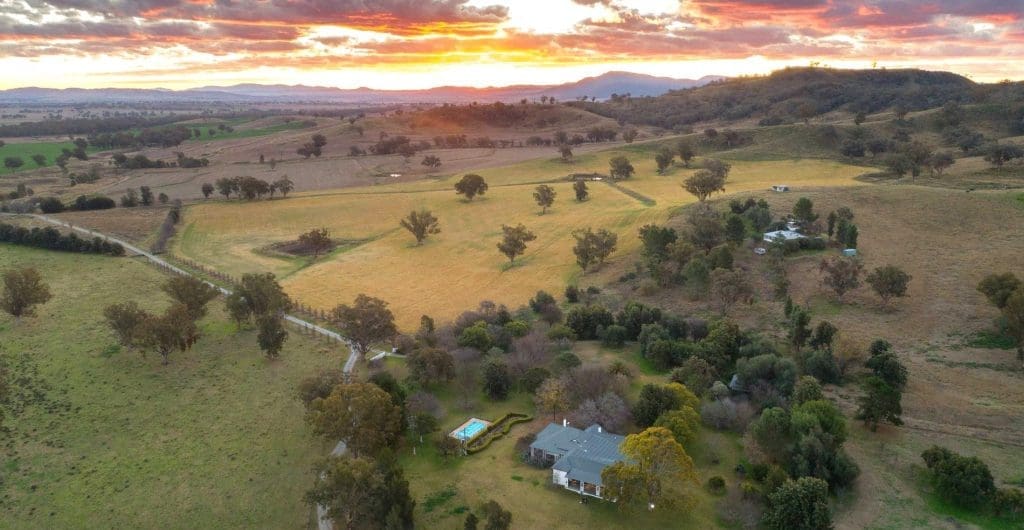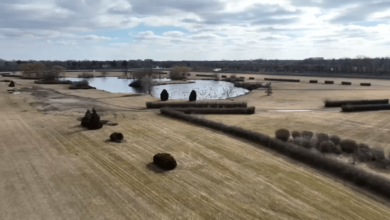Weekly property review: Are EOI campaigns still relevant?


AFTER failing to sell earlier via expressions of interest, a notable number of grazing properties have returned to the market in 2024 with a price tag attached.
It begs the question – are EOI campaigns relevant in the current consolidating market?
In this week’s property review, three property specialists share their thoughts on EOIs and their future in the current market conditions.
LAWD, Col Medway
LAWD senior director Col Medway said the expression of interest campaigns for many mixed farming properties offered to the 2023 market were impacted by the evaporation of market confidence as the year unfolded.

Col Medway
“Basically, the lack of buyer confidence occurred due to the collapse of livestock prices last spring and as a result, the deal flow fizzled out,” he said.
Despite predictions of impending drier than normal weather conditions, Mr Medway said southern New South Wales and Victoria experienced a terrific spring summer season.
“Even though there was a little pinch in October, I have never seen a better summer in our part of the world.”
He said there were always two ways to sell a property asset – with a price, or without.
“Once a property is given a price, that is the peg in the sand you (buyers and vendors) dance around. Those without a price are offered either by expressions of interest, tender or auction.”
Mr Medway said LAWD did not offer the tendering process because it was rarely supported by buyers.
“Tenders require interested parties to submit offers on a contract. We believe expressions of interest or auction are the best way to go to market without a price.”
He said some vendors would rather poke themselves in the eye with a pencil than sit up in an auction room in front of the whole district to watch their generations of efforts go to market in a public way.
“I understand that. It is a stressful thing to do.”
Current market
Mr Medway is seeing green shoots in the rural property market.
“There is confidence, especially with the livestock market returning to some degree of balance – where the number of hooks (on the meatworks kill chain) is gradually matching up with the number of livestock available each week.”
“However, Australia is still nowhere near its processing capacity due to labour constraints. It is still a major issue for the industry,” he said.
Mr Medway believes the rural property market topped out in 2022.
“The only way to tell whether the market has hit the top or the bottom is in a revisionary approach because at the time you just don’t know. If you can determine that, you are not clever, just lucky.”
“Values declined last year and in order to get deals done, especially in the second half of 2023, properties were being discounted by between 10 and 15 percent,” Mr Medway said.
Generally, he said most sellers accepted that.
“Vendors dictate where they are prepared to transact at and for the most part, were happy to sell at those lower levels understanding the top of the market had come and gone, and that markets always correct.”
He said last spring when livestock markets fell away, many opportunistic offers were lodged on properties being offered for expressions of interest.
“Some EOIs were coming in at 60 percent under the price guide. Our advice to vendors was to hold the line and not accept those offers because those buyers were smelling blood in the water, thinking the property market was going to fall away further.”
“We didn’t concur with that view. We thought the livestock situation would be short-lived and that has been the case,” Mr Medway said.
In terms of the 2024 rural property market, he is predicting a standoff.
“In regard to values, this coming year will experience a period of consolidation and there is no shame in vendors reducing the price of an asset if they are genuinely trying to find a buyer.”
Given the rural property market appears to be plateauing, do expression of interest campaigns still have a place in the current market?
Mr Medway said when the market was rising, experiencing year-on-year growth, going to market without a price was a sensible thing to do.
“Whether it was EOI or auction, agents were generally surprised on the upsells where people saw value.”
“At this stage of the market, which is likely to consolidate sideways for a while, then the case to list a property without a price is less compelling,” he said.
However Mr Medway admitted that is not always the case.
“The sensible thing to do for a quality asset, sought-after in any market, is to create some competitive tension and offer it via expressions of interest. Otherwise, vendors are being asked to consider listing with a price.”
In the end, Mr Medway said it would be horses for courses depending on how the vendor wants to move forward but he never ‘dies in a ditch’ over selling method.
“In my view, it is talked-about way too much. It boils down to what suits the asset, who you think the target buyers are going to be and what sits comfortably with the vendor.”
Moree Real Estate, Paul Kelly
Moree Real Estate agent Paul Kelly is currently running a number of expressions of interest campaigns.
“The three main tools in the shed are for sale, expressions of interest and auction – with the method of sale depending on the asset, the vendor and market conditions,” he said.

Paul Kelly, Moree Real Estate
Mr Kelly said EOIs offered more flexibility than auctions.
“Expressions of interest campaigns are used when a place can be divided and sold separately to a number of interested parties, particularly neighbours and locals seeking smaller blocks to bolt-on to their existing holdings,” he said.
“We are currently marketing a place featuring two very different country types (red and black soils). As a result, we will offer the property via an expressions of interest process as it may appeal to two separate buyers.”
Mr Kelly said EOI offered flexibility in the sale process.
“Parties can make various offers, either cash, terms or express an interest in only part of the property. Alternatively, auction is a more rigid process, with all parties having to bid on the same set contract.”
He said despite the positives, there were some downsides to a EOI process.
“It lacks the transparency of an auction and producers fear the unknown (for instance, is there actually another party involved) and they don’t like blind bidding.”
Mr Kelly said in an auction room, interested parties can see who they are bidding against, but on the flipside, it is not something every vendor can face.
“Personally, I don’t like taking places to auction unless I am certain there will be a result, because if a $10 million asset is passed in at $7m or $8m, the market wrongly determines that is what the property is actually worth.”
Mr Kelly believes a ‘softer’ selling market lends itself to expressions to interest.
“A softer market usually means a good deal can be done with just one interested party because they are prepared to offer more because they don’t want to miss out on the asset.”
He said in the auction room, registered parties only need to bid to the level to beat the next person, which sometimes means the result can be disappointing.
“Conversely, properties coming into a ‘hot’ market should be auctioned because it is a much more straightforward and transparent process.”
Mr Kelly said EOIs and auctions were similar because they did not require setting an upper limit price.
“A property listed for sale at $10m will rarely achieve $11m unless someone else comes along and competes for it. Usually, the vendor will achieve $9m or $9.5m.”
“An EOI and auction method of sale allows that price to be pushed higher than the expectation,” Mr Kelly said.
Adcock Partners Livestock & Property, Andrew Adcock
Brisbane-based Andrew Adcock is an industry veteran with more than 30 years of experience under his belt.
The principal of Adcock and Partners Property & Livestock has worked with some of the country’s biggest agencies covering Queensland, New South Wales, South Australia and the Northern Territory.

Andrew Adcock, Adcock Partners
Mr Adcock admitted he was not a fan of expressions of interest.
“I am an auction junkie. Auctions are more transparent, and everyone competes on a level playing field.”
“I believe agents would prefer to go to auction, vendors would prefer to participate at auction and the buyer market would prefer to compete at auction,” he said.
Mr Adcock said many people who had participated in an EOI campaign, distrusted the process.
“Many buyers claim agents have approached them on several occasions asking if the price they put forward was their best offer.”
Mr Adcock said he would prefer a failed auction than an EOI campaign that amounts to nothing because potential buyers can be identified through an auction campaign.
In the current market there was still plenty of buyer interest for quality assets and if listed for genuine sale, the property would sell.
Mr Adcock said today, the ‘fear of missing out’ has disappeared from the rural property market which means the disparities between the best buyer and the next buyer, normally managed by an expressions of interest process, no longer existed.
“Having said that, EOIs do have a place in the market, especially if a property has a number of titles or offers several buying options. Take for example Maryfield and Limbunya Stations in the Northern Territory. Potential buyers can tick the box they are interested in – the land, the carbon or both.”
“It is certainly not a sale method to be done away with. There is a place for EOIs, especially horticultural and farms where water and land can be offered separately. However, I don’t believe it suits many grazing assets at present.”





